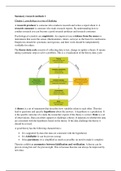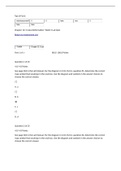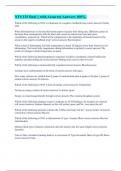Summary
Samenvatting Methodologie 1 Jaar 1.1 Psychologie
- Course
- Institution
- Book
Dit is een erg complete samenvatting voor het vak Methodologie 1 van het eerste jaar psychologie. De samenvatting is geschreven aan de hand van het boek Research Methods in Psychology van Beth Morling, de Statistics Syllabus van Sander Los en informatie uit de hoorcolleges.
[Show more]






